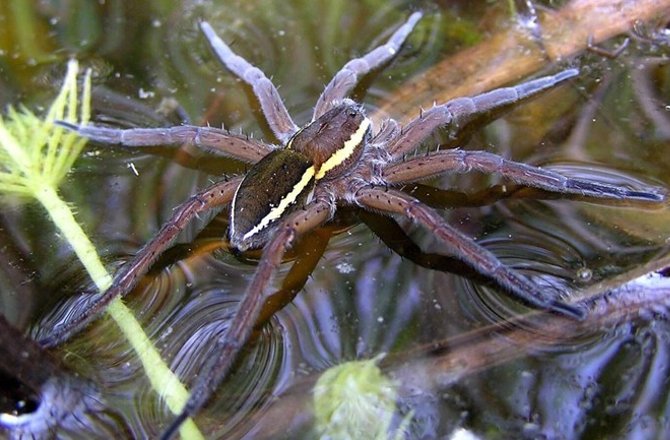
One of Britain’s largest arachnids—the fist-sized, fish-gobbling fen raft spider—has once again returned to the wild in growing numbers, after being pushed to the precipice of extinction just five years ago.
The size of this super spider, which can balance on water thanks to a whopping (for a UK spider) 8cm leg-span, may be a little much for some arachnophobics to bear. But luckily for Brits, it isn’t harmful to humans, preferring instead to munch on a diet of pond skaters, water beetles, newt tadpoles and even small fish.
Confined to just three locations in 2010, it is now thriving on four new sites on the Norfolk and Suffolk Broads, thanks to a highly successful translocation project.
As part of the efforts Dr Helen Smith—an ecologist contracted by Natural England under the Species Recovery Project—spearheaded the hand-rearing of an outstanding 6,000 baby spiders, before releasing the three-month-olds on nature reserves in the Yare and Waveney valleys.
Speaking about the success of the translocation, Dr Smith said: ‘These large and beautiful spiders have really made these new sites home. This is a species that is clearly able to thrive in the Broadland grazing marshes that have been so carefully restored by conservation organisations in recent years.’
‘It’s already made a great start on colonising the area’s extensive ditch networks and, in the process, has taken a big step back from the brink.’
The Royal Society for the Protection of Birds (RPSB), one of the conservation effort’s partners, reports that this year’s nursery web count in the Norfolk Broads jumped from 184 webs in 2014 to 480 today.
At one of the relocation sites, the Suffolk Wildlife Trust nature reserve, the hefty arachnids have even spread from an initial 500m relocation zone to an area of more than three kilometres away.
But don’t worry—you’re unlikely to have one of these critters dropping in on you in the shower any time soon:
‘This is never going to be a common species,’ concluded Dr Smith. ‘It’s always going to be consigned to our best wetlands.’
